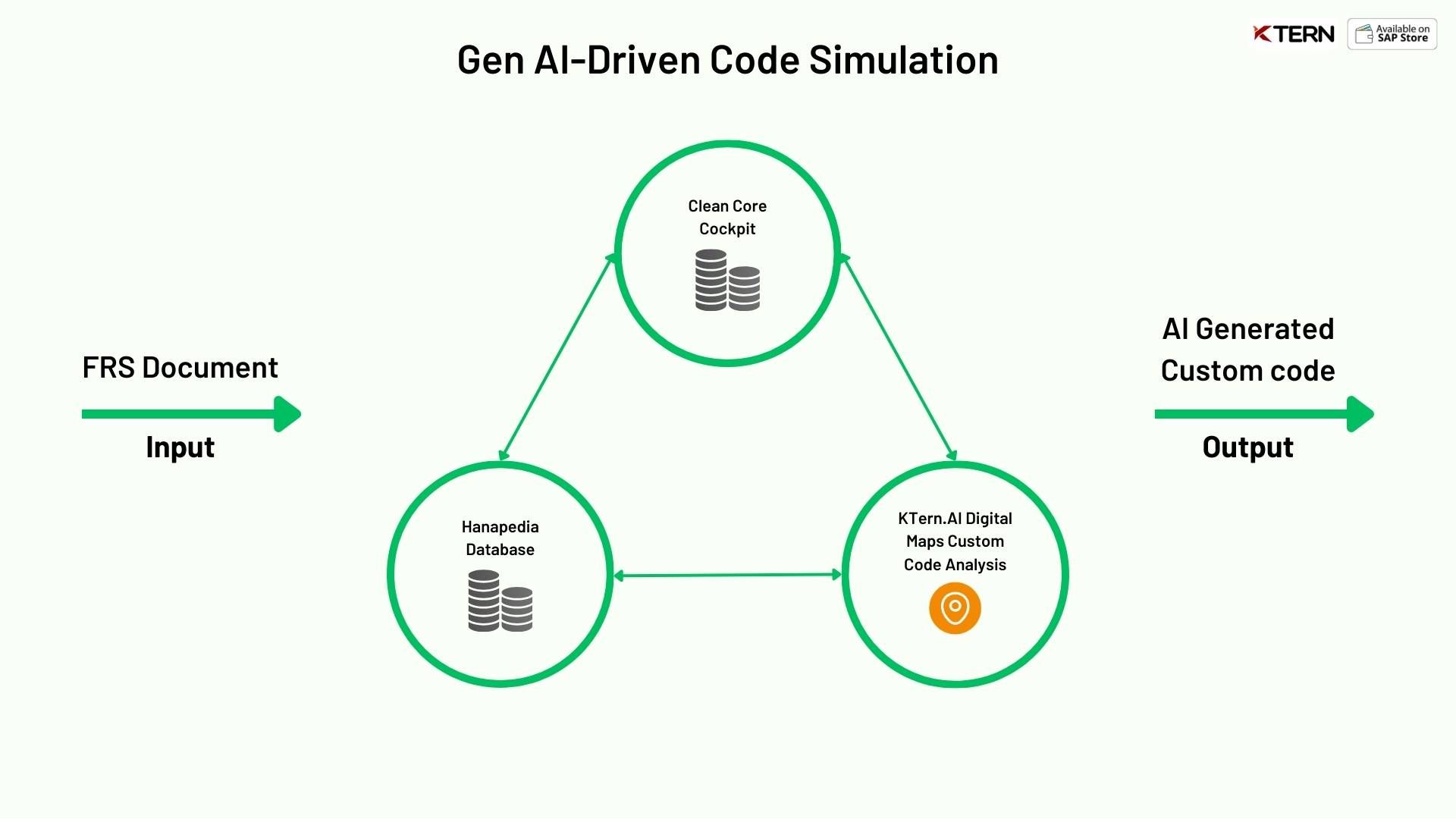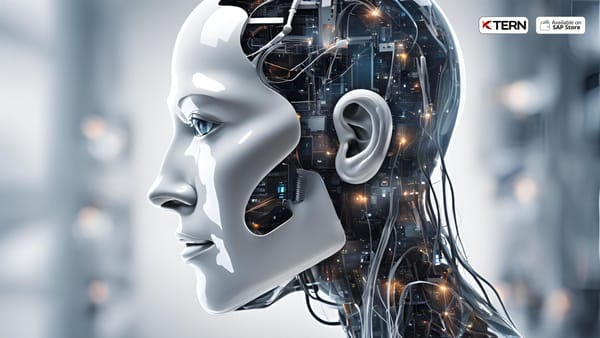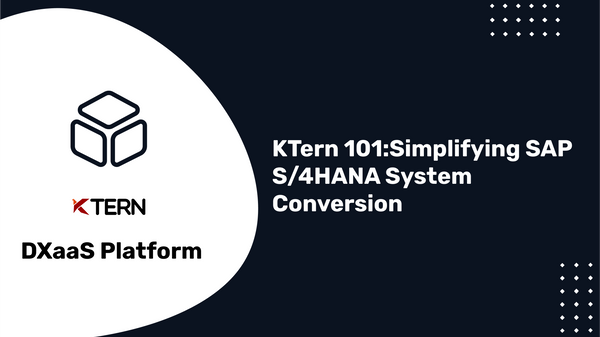AI-Powered SAP Extensions: Clean Core Strategies
Introduction:
SAP is an ecosystem that provides intelligent solutions for businesses that are flexible and scalable. However, no one-size-fits-all solution can cater to the needs of all organizations worldwide, as each company operates in a unique way. Therefore, it is necessary to customize or build a solution that specifically addresses the particular pain points of each business.
Understanding side-by-side extension:
Developers face a new challenge when creating large ABAP programs on public cloud systems. Unlike on-premise systems, creating such extensions directly on the cloud system is impossible as it is a shared system. Although in-app extensions within the system can fulfill individual requirements to some extent, they are not enough for companies needing a more extensive SAP S/4HANA Cloud system extension. In this case, companies can opt for a side-by-side extension, developed using various tools and services of the SAP Business Technology Platform (SAP BTP).
These side-by-side extensions offer more flexibility than in-app extensions and keep the SAP Core clean. This brings us to this new term, SAP Clean Core.
Why SAP Clean Core?
SAP Clean Core is a term used to describe an approach and a concept aimed at achieving a modern, flexible, and cloud-compliant SAP S/4HANA Cloud system. This approach involves integrating and extending SAP S/4HANA Cloud to ensure optimal master data quality and proper business process governance. By adopting this approach, customers can experience better maintainability and lower total cost of ownership (TCO) for their SAP S/4HANA Cloud system.
Clean Core Extensibility
On the other hand, Clean Core Extensibility is an extension methodology that ensures that any extensions are kept separate from the SAP application. Extensions only access SAP business objects through well-defined and upgrade-stable interfaces.
Traditional ERP:
The following characteristics define an ineffective traditional ERP,
- Technical debt: Traditional SAP ERP systems can lead to significant technical debt due to heavy customizations tailored to specific business needs. Customizations can cause business disruptions and prolong upgrade cycles as they often need reworking to fit new updates or versions.
- Data issues: High data volumes can become unwieldy, leading to data management difficulties and quality issues. Data accuracy, consistency, and completeness are crucial for informed decision-making but are often compromised in traditional systems.
- Ineffective business process: Outdated ERP systems may no longer align with current business processes, leading to inefficiencies. There might be a lack of clarity in the transformation path for businesses, hindering effective evolution and adaptation to market changes.
- Complex integrations: Integrating traditional ERPs with other modern systems can be complex due to problems with conventional APIs. Managing these integrations can be challenging, requiring substantial IT resources and expertise.
- Lack of discipline in operations: Traditional ERP systems may not support the agile operations needed in today’s fast-paced business environments. Stressful SAP releases can occur if the ERP system is not managed with disciplined operations, leading to errors and downtime.
- Unreliable software stack: Outdated or unstable software versions can lead to a lack of reliability in the ERP system. This can cause system outages or errors, impacting business continuity and performance.
Intelligent SAP ERP powered by KTern.AI:
In contrast, the characteristics of an intelligent enterprise are explained below,
- Clean Extensions: The modularization and development of side-by-side SAP Business Technology Platform (BTP) extensions represent a strategic move towards faster innovation cycles. By adopting a clean extension philosophy, businesses can enhance their SAP systems without disrupting the core ERP functionality. This enables quicker adaptation to market changes and technological advancements, fostering a culture of continuous innovation.
- Clean Data: Data quality is foundational to effective decision-making and operational efficiency. KTern.AI emphasizes the importance of maintaining data with high levels of accuracy, completeness, and consistency. Optimizing the data footprint not only improves performance but also ensures that businesses can rely on their data for critical insights and analytics, thereby enhancing overall data governance and management practices.
- Clean Process: Future-proofing business processes is crucial for sustaining long-term competitive advantage. By focusing on agile business transformation, KTern.AI supports organizations in streamlining their processes, eliminating inefficiencies, and ensuring that business workflows are aligned with strategic goals. This agility allows companies to respond to new opportunities and challenges quickly.
- Clean Integrations: Integrations are essential for a seamless technology ecosystem. By leveraging standard APIs, KTern.AI aims to lower IT risks and ensure that integrations are both flexible and stable. This approach minimizes the complexity and potential issues associated with connecting disparate systems, thereby facilitating smoother data flows and enhancing interoperability across the business landscape.
- Clean Operations: Efficient release impact mining and smart DevOps practices lead to significant operational expenditure (OpEx) savings. KTern.AI's focus on clean operations involves using intelligent tools and methodologies to predict the impact of system updates, streamline release cycles, and optimize overall IT operations. This proactive stance on managing system changes ensures that businesses can maintain high levels of service quality while minimizing costs.
- Clean Stack: Maintaining an up-to-date software stack is crucial for ensuring system stability and facilitating faster upgrades. By adopting a clean stack approach, KTern.AI helps organizations keep their SAP systems current with the latest features and security updates. This not only reduces the risk associated with outdated software but also enhances the system's ability to support new business initiatives and technologies.
Benefits of Clean Core:
Maintaining a clean core is beneficial for everyone. In summary, the advantages for customers are as follows:
- Ease of upgrade: Make upgrades non-events, from a custom code point of view.
- Fast consumption of innovation: Always on top of innovation technologies.
- E2E system security, continuity, and stability.
- TCO: efficient use of infrastructure and licenses.
- Permanent traceability in all areas of the core.
AI-driven Code Simulation:
By leveraging AI models like OpenAI ChatGPT and Amazon Bedrock, KTern.AI not only simplifies but also accelerates the development lifecycle, ensuring businesses can quickly adapt to new requirements while maintaining a clean and compliant core. Here’s an expanded view of this process:

1. AI-Powered Analysis of Functional Requirement Specifications (FRS)
The journey begins with an AI-driven analysis of FRS documents, where the KTern.AI engine meticulously reviews the project's detailed requirements. This step is crucial for understanding the specific needs and nuances of the project, ensuring that the subsequent steps are aligned with the project's goals. By analyzing these documents, KTern.AI lays the groundwork for customizations that are precisely tailored to meet the business's unique demands.

2. Mapping with KTern.AI Digital Hanapedia Knowledge Base
Following the analysis, there’s an automated mapping to the extensive KTern.AI Digital Hanapedia knowledge base. This repository is rich in industry-specific code assets designed to serve various lines of business and scope items. The availability of these assets streamlines the development process, providing developers with a solid foundation of code snippets, patterns, and practices that are directly applicable to a wide array of business scenarios.

3. Automated System Profiling
The next step involves automated system profiling, where existing custom codes undergo a thorough evaluation by KTern.AI Digital Maps bots. This evaluation assesses the codes' functional, performance, and security impacts on the system. By gaining a deep understanding of the system's current state, KTern.AI enables intelligent decision-making for future development and customization efforts, ensuring compatibility and optimizing performance.
4. Triangulated Learning for Code Generation
The process then leverages a triangulated learning approach, combining data, experience, and AI insights to generate code. This innovative method supports developers in creating side-by-side extensions, facilitating the development of solutions that are both innovative and seamlessly integrated with the existing SAP landscape.

5. Automated Test Scenario Generation
KTern.AI further automates the generation of test scenarios, providing detailed insights on master data and customizing data variants. This comprehensive approach to testing ensures that all possible variations are considered, leading to the development of robust and resilient SAP extensions that perform as expected in various scenarios.
6. Automated Signoff Matrix Generation
An automated signoff matrix is generated to orchestrate BTP extensions with streamlined change management processes. This crucial step ensures that every new integration or extension is harmoniously integrated with existing systems and workflows, maintaining system integrity and optimizing operational efficiency.
Conclusion:
KTern.AI's Gen AI-driven code simulation approach to SAP ERP systems promises optimized data quality, future-proofed business processes, and manageable IT operations. By integrating AI, businesses can now automate and streamline the development of side-by-side BTP extensions, ensuring a 'Clean Core' in their SAP S/4HANA Cloud system. This approach enables companies to focus on flexibility and innovation, reducing technical debt, enhancing operational efficiency, and quickly adapting to the latest technologies to ensure seamless upgrades and a robust, secure ERP environment.




